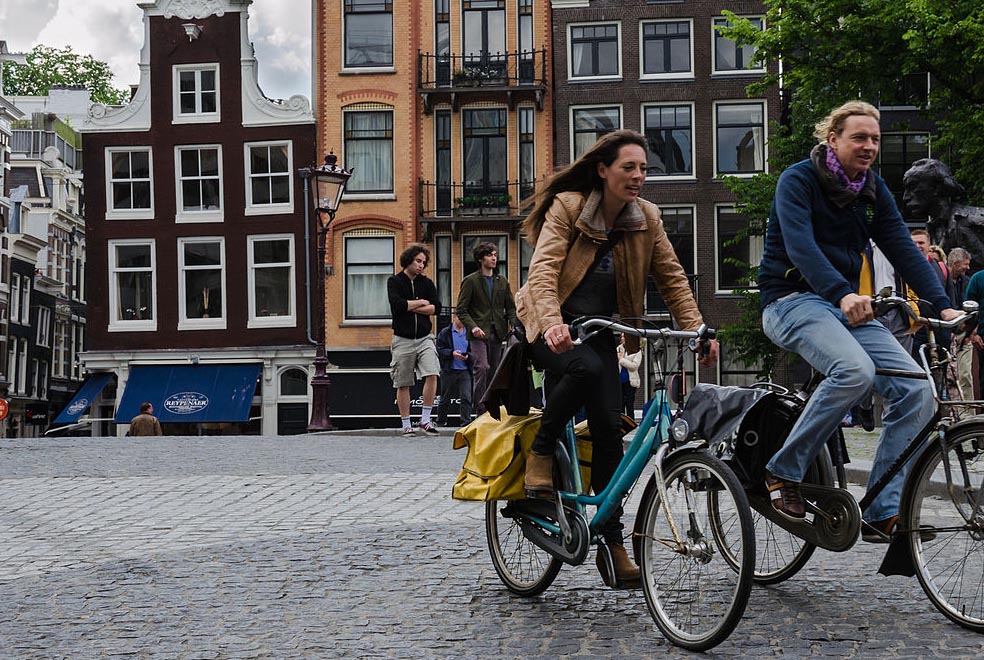Today’s post is by contributing writer Lucky Sharma:
I always thought that the better a city’s bike infrastructure is, the higher the number of people who bike and the healthier the general population is compared to its counterparts. I hypothesized this based on the innumerable observations I had gathered in my head while biking for hundreds of miles in cities within and outside the US. My intent was to confirm the hypothesis that establishes the correlation (if not causality) between the bike-ability or ease of biking in a city and the fitness of its citizens. Based on data from studies conducted by various non-profit and biking groups, the hypothesis is correct.
Within the US, bike commuting has increased by 43% between 2000 and 2010. There is a bike revolution underway and so it is a perfect time to test the relationship between the bike friendliness of a city to its citizens’ health. With the evolution of shared economies in cities such as San Francisco, Seattle and New York, the correlation between bike friendliness and fitness is obvious. Analysis of reports4 objectively establishes that the cities that are most bike-able will have a healthier population than their counterparts.
The top 5 contenders in the 2014 Most Fit 50 Largest Metropolitan Areas2 are also the 2012 Most Bike Friendly cities3 in the country though the two reports rank different geographic boundaries (cities vs metropolitan areas). Nonetheless, the cities included in the study on bike friendliness are a considerable part of the metro areas studied in the 2014 health of the city report. Eight of the ten fittest metro areas have a bike score of more than 62 compared to the lowest score of 28.8 (Birmingham, AL).
Biking in groups is a great way to leverage social networks to develop a healthier lifestyle and help increase fitness of a community as a whole. The fittest cities boast of the lowest rates of cardiovascular disease and high levels of physical activity, which is fueled by having more exercise options like biking outdoors.
As intuitive as it might sound that a city with a high bike score5 will have a high walk score, it is not true for the fittest cities in the U.S. The third fittest city Boulder, CO has a very low walkscore (56) compared to San Francisco (83.9) but has a high bike score (86). A similar example is Sacramento, CA which makes it to the ten fittest cities list with a high bike score (68) even though its walk score (43) is low. San jose, CA is the sixth fittest U.S. city with a higher bike score (56) compared to its walk score (48).
According to an American Fitness Index report, city policies like banning smoking in public places, adding new parks, and bike trails result in low obesity, smoking, and cardiovascular disease. This combined with the social dynamics and a close knit community help prioritize healthy habits and supports social support for group outdoor activities like biking.
Full disclaimer: I love San Francisco and have called the Bay Area home for few years now so I am biased about it. My personal bias aside I wanted to validate my hypothesis. Part of this exploration was to validate if my gut feeling was close to reality.
1- Walk Score is a private company that provides walkability services through a website and mobile applications.
2 – Most Fit 50 Largest Metropolitan Areas is the 2014 AFI (American Fitness Index) data report that reflects a composite of preventive health behaviors, levels of chronic disease conditions, and community resources and policies that support physical activity. This report is authored by American College of Sports Medicine (ACSM), with support from the WellPoint Foundation.
3- The report ranking America’s Top 50 Bike-Friendly Cities by Bicycling magazine (bicycling.com)
4- 2011 and 2014 reports by ACSM, America’s Top 50 Bike-Friendly Cities
5- Bike Score is based on on the availability of bike infrastructure (lanes and trails), the hilliness of the area, destinations and road connectivity, and the number of bike commuters.
6 – 2012, Transforming Bodies and Lifestyles, Institute for the Future
Photo Credit: “Amsterdam Cycling 4” by Alfredo Borba – Own work. Licensed under CC BY-SA 4.0 via Wikimedia Commons.


















[…] bikes are on the rise in many cities across the US and Europe, there’s a bit of alarming news lately. Thought of as the most bike-loving city in the […]